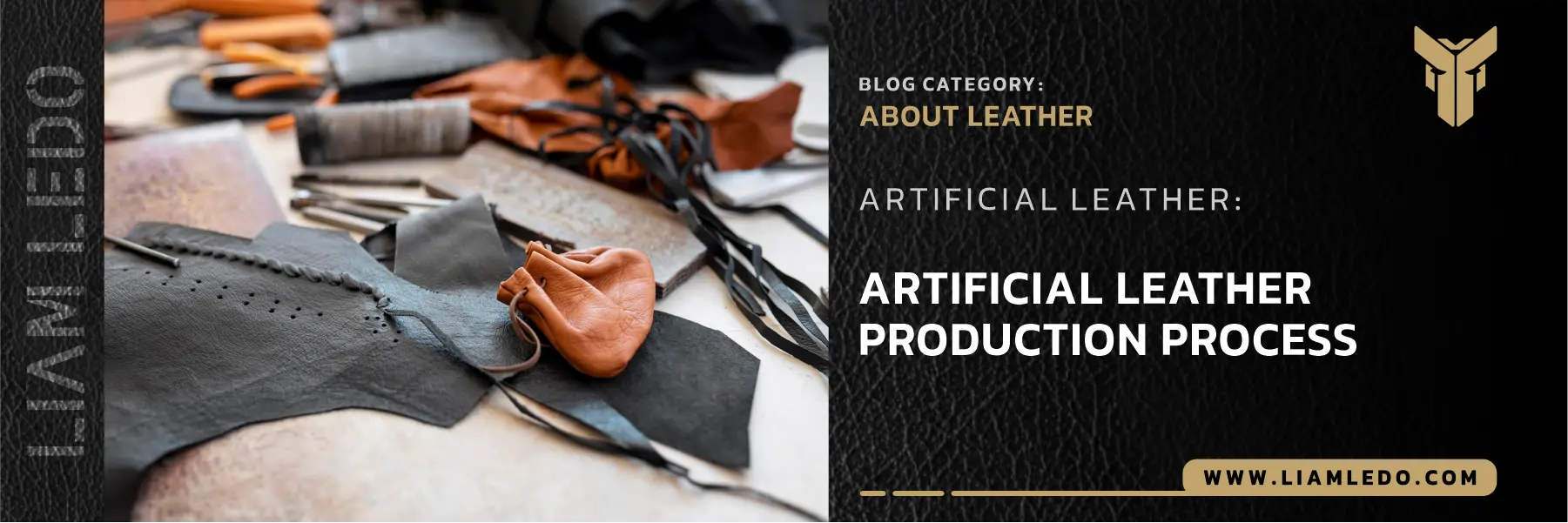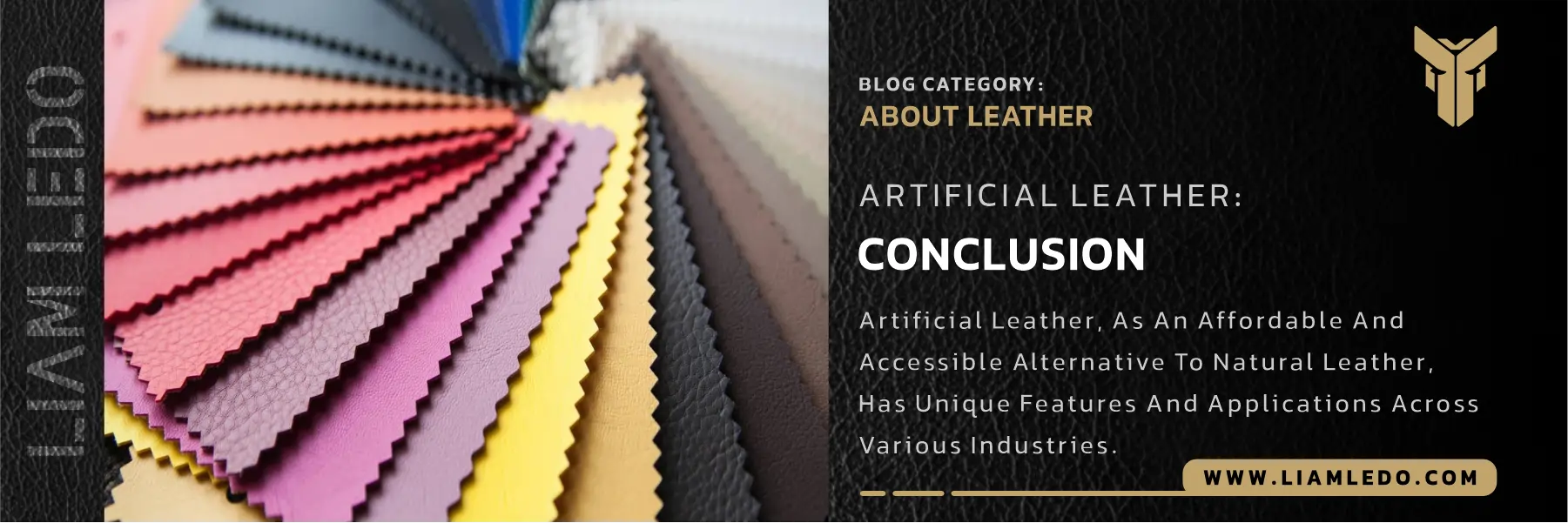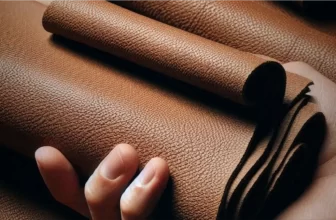
A Revolution in the World of Fashion and Industry
Artificial leather, also known by other names such as synthetic leather, faux leather, or industrial leather, has emerged as an affordable and accessible alternative to natural leather across various industries, particularly in fashion and apparel. With its unique characteristics, artificial leather has quickly replaced natural leather in many applications and remains one of the most popular materials for producing various products. In this article, we will explore artificial leather, its types, production processes, advantages and disadvantages, and its diverse applications.
1. Definition and History of Artificial Leather:
Artificial leather refers to materials that are manufactured using modern technologies to mimic the properties of natural leather. This type of leather was developed in the early 20th century to create a cost-effective and ethical substitute for natural leather.
1.1. History
The history of artificial leather dates back to the early 20th century when researchers and manufacturers sought alternatives to natural leather, which was criticized for its high costs and animal rights concerns. The first synthetic leathers were made from plastic materials like PVC (polyvinyl chloride), and over time, with technological advancements, various types of artificial leather with diverse properties were introduced to the market.
2. Types of Artificial Leather:
Artificial leather is generally divided into two main categories: plastic-based artificial leather and fiber-based artificial leather. Each of these categories has specific features and applications.
2.1. Plastic-Based Artificial Leather
This type of leather is typically made from plastic materials like PVC or PU (polyurethane) and is widely used in the fashion and apparel industry due to its unique properties.
- PVC Leather (Polyvinyl Chloride):
- Characteristics: PVC leather was one of the first types of synthetic leather introduced to the market. This type of leather has high resistance to water and wear and is easy to clean.
- Advantages: Low cost, high durability, and water resistance.
- Disadvantages: Limited breathability and lower softness compared to natural leather.
- PU Leather (Polyurethane):
- Characteristics: PU leather, produced using modern technologies, has a more natural leather-like appearance. It is generally softer and more flexible than PVC leather.
- Advantages: A more natural leather-like appearance, better breathability, and greater comfort.
2.2. Fiber-Based Artificial Leather
This type of leather is produced using natural fibers such as cotton or viscose and generally has properties similar to natural leather.
- Nano Leather:
- Characteristics: Nano leather uses natural fibers and nanotechnology to create unique textures and properties.
- Advantages: Water and stain-resistant, high softness, and comfort.
- Disadvantages: Higher cost compared to other types of synthetic leather.
- Microfiber Leather:
- Characteristics: Microfiber leather is made from ultra-fine fibers, giving it significant softness and durability.
- Advantages: High breathability, softness, comfort, and wear resistance.
- Disadvantages: Higher price and special care requirements.

3. Artificial Leather Production Process:
The production of artificial leather involves several key stages, each depending on the type of synthetic leather and its desired characteristics.
3.1. PVC Leather Production
- Material Preparation: Initially, PVC raw materials are prepared using plastic and additives.
- Dispersion and Layering: The raw materials are spread into thin layers on surfaces such as synthetic fibers.
- Curing and Stabilizing: PVC layers are cured and stabilized using heat and pressure, forming the final shape.
3.2. PU Leather Production
- Material Preparation: Polyurethane is prepared in liquid form and mixed with other materials.
- Dispersion and Layering: The PU materials are spread into thin layers on substrates like natural or synthetic fibers.
- Curing and Stabilizing: PU layers are cured and stabilized using heat and pressure to achieve the desired final shape.
3.3. Microfiber Leather Production
- Fiber Preparation: Microfiber fibers are produced from natural or synthetic materials and prepared into thin strips.
- Weaving: The fibers are woven into specific and compact patterns.
- Coating: The final layer is coated with special materials to achieve the desired properties
4. Advantages and Disadvantages of Artificial Leather:
Although artificial leather is introduced as a substitute for natural leather, it has its unique pros and cons.
4.1. Advantages
- Cost-Effective: Artificial leather is generally more affordable than natural leather.
- Design Variety: With modern technologies, artificial leather can be easily produced in various colors and patterns.
4.2. Disadvantages
- Limited Breathability: Some types of synthetic leather, especially PVC leather, may have limitations in breathability.
- Environmental Concerns: The production of artificial leather, particularly plastic-based types, may raise environmental concerns due to the use of chemical and plastic materials.
- Lower Quality: Compared to natural leather, some types of synthetic leather may be less desirable in terms of quality and tactile feel.
5. Applications of Artificial Leather:
Artificial leather is used in various industries due to its specific characteristics and is employed in the production of a wide range of products.
5.1. Fashion and Apparel
Due to its affordability and the ability to produce in different colors and patterns, artificial leather is widely used in the fashion and apparel industry. This type of leather is used to make bags, shoes, clothing, and various accessories.
5.2. Furniture and Interior Design
Artificial leather is also used in furniture and interior design due to its durability and ease of maintenance. This type of leather is used to produce chairs, sofas, and decorative coverings.
5.3. Automotive Industry
In the automotive industry, synthetic leather is used for car seat covers and interiors. This type of leather is a suitable option for vehicles due to its high resistance and design versatility.
5.4. Industrial Products
In some industries, artificial leather is used to produce various industrial products due to its specific properties. These products include waterproof covers, belts, and protective gear.

Conclusion:
Artificial leather, as an affordable and accessible alternative to natural leather, has unique features and applications across various industries. Despite its specific advantages and disadvantages, this type of leather is rapidly expanding in popularity due to its design variety, affordability, and durability. With advances in technology and attention to environmental issues, the production of artificial leather in the future can move towards creating high-quality, eco-friendly materials, making it a viable and sustainable choice for consumers.







